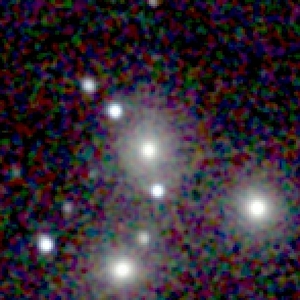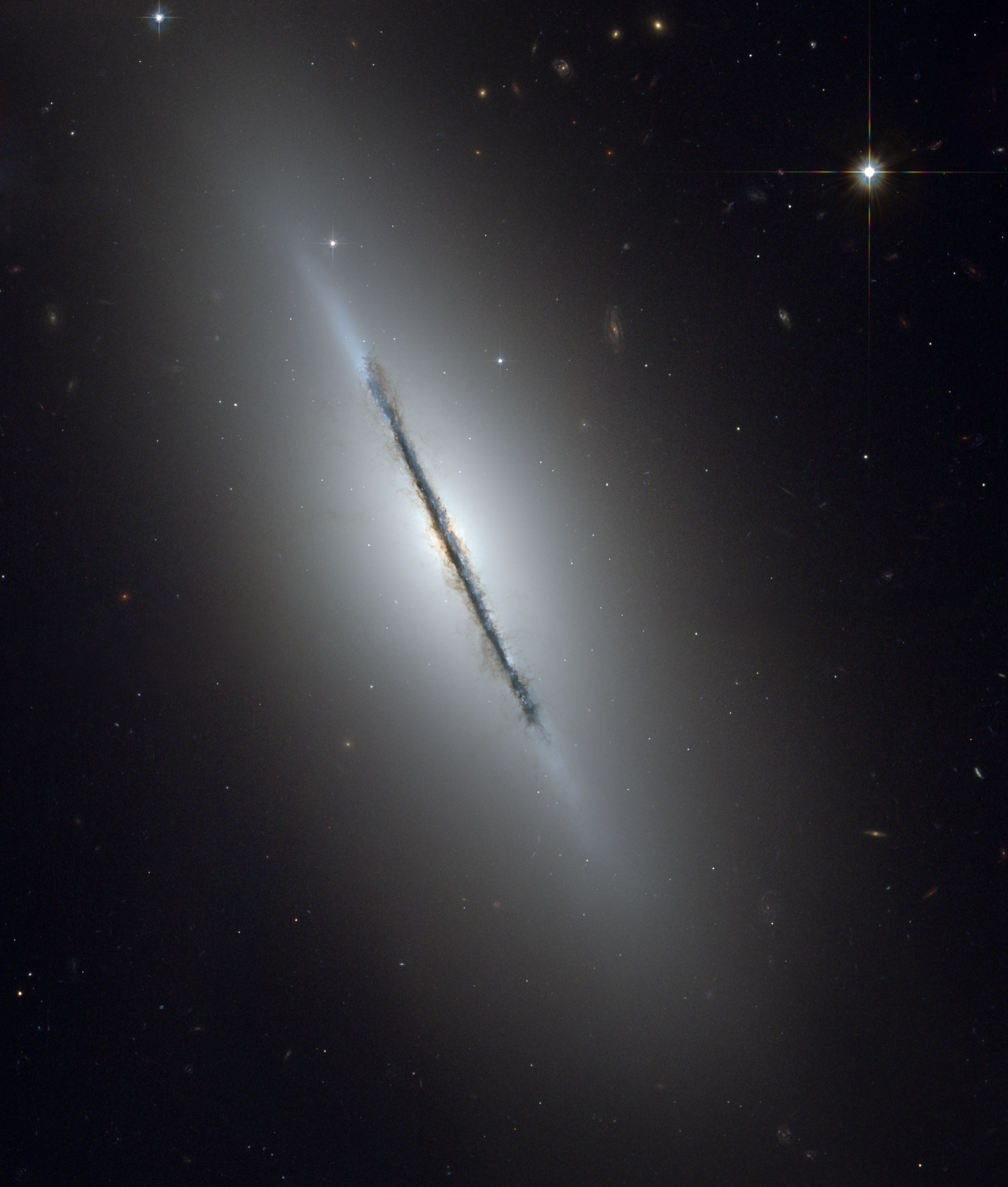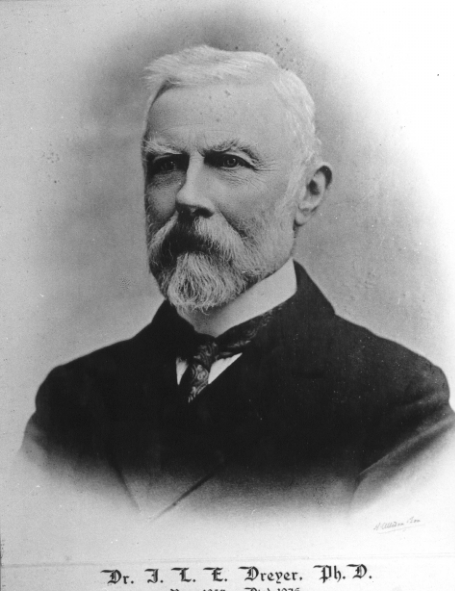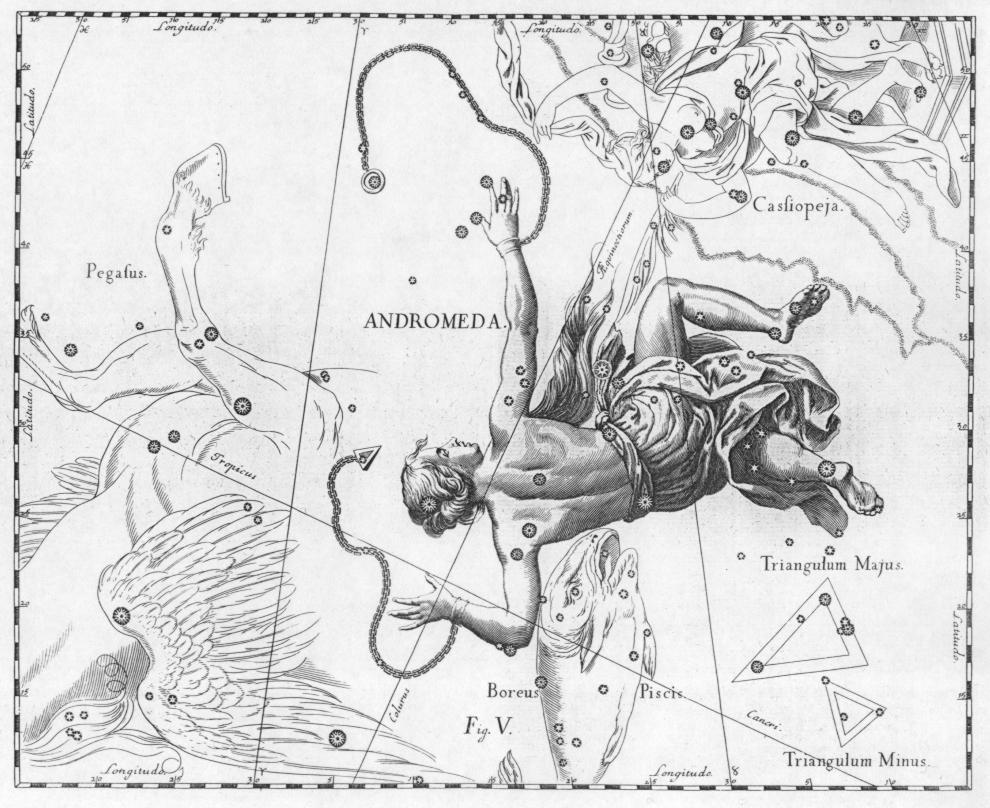|
NGC 68
NGC 68 is a lenticular galaxy, and the central member of the NGC 68 group, in the constellation Andromeda. The galaxy was discovered on September 11, 1784, by William Herschel, who observed the NGC 68 group as a single object and described it as "extremely faint, large, 3 or 4 stars plus nebulosity". As such, his reported location is between NGC 68, NGC 70, and NGC 71. By the time Dreyer looked at the galaxies to add to the NGC catalog, however, he was able to tell that the single galaxy observed by Herschel was in fact 3 adjacent galaxies, and cataloged them as NGC 68, NGC 70 NGC 70 is a spiral galaxy located in the constellation Andromeda. It was discovered on October 7, 1855 by R. J. Mitchell and was also observed on December 19, 1897 by Guillaume Bigourdan from France who described it as "extremely faint, very sm ..., and NGC 71. References External links * {{DEFAULTSORT:NGC 0068 0068 01187 00170 +05-01-065 Lenticular galaxies 17840911 Andromeda (constell ... [...More Info...] [...Related Items...] OR: [Wikipedia] [Google] [Baidu] |
NGC 70
NGC 70 is a spiral galaxy located in the constellation Andromeda. It was discovered on October 7, 1855 by R. J. Mitchell and was also observed on December 19, 1897 by Guillaume Bigourdan from France who described it as "extremely faint, very small, round, between 2 faint stars" NGC 70 is a member of a compact group of seven or eight galaxies, sometimes called the NGC 70 Group or the VV 166 Group. The group consists of three relatively bright galaxies: 70, 71 and 72 in the NGC catalog, along with four fainter galaxies. NGC 68 appears to be a group member, but its discrepant radial velocity and lack of tidal distortion suggests that it may be an unrelated galaxy along the group's line of sight. In photographs the NGC 70 group resembles the much more famous Stephan's Quintet group, and it is a popular target for amateur astrophotographers. References External links * 113 113 may refer to: *113 (number), a natural number * AD 113, a year *113 BC, a year *113 (band), a ... [...More Info...] [...Related Items...] OR: [Wikipedia] [Google] [Baidu] |
Lenticular Galaxy
A lenticular galaxy (denoted S0) is a type of galaxy intermediate between an elliptical (denoted E) and a spiral galaxy in galaxy morphological classification schemes. It contains a large-scale disc but does not have large-scale spiral arms. Lenticular galaxies are disc galaxies that have used up or lost most of their interstellar matter and therefore have very little ongoing star formation. They may, however, retain significant dust in their disks. As a result, they consist mainly of aging stars (like elliptical galaxies). Despite the morphological differences, lenticular and elliptical galaxies share common properties like spectral features and scaling relations. Both can be considered early-type galaxies that are passively evolving, at least in the local part of the Universe. Connecting the E galaxies with the S0 galaxies are the ES galaxies with intermediate-scale discs. Morphology and structure Classification Lenticular galaxies are unique in that they have a vis ... [...More Info...] [...Related Items...] OR: [Wikipedia] [Google] [Baidu] |
MCG Objects
The Melbourne Cricket Ground (MCG), also known locally as "The 'G", is an Australian sports stadium located in Yarra Park, Melbourne, Victoria. Founded and managed by the Melbourne Cricket Club, it is the largest stadium in the Southern Hemisphere, the 11th largest globally, and the second largest cricket ground by capacity. The MCG is within walking distance of the city centre and is served by Richmond and Jolimont railway stations, as well as the route 70, route 75, and route 48 trams. It is adjacent to Melbourne Park and is part of the Melbourne Sports and Entertainment Precinct. Since it was built in 1853, the MCG has undergone numerous renovations. It served as the centerpiece stadium of the 1956 Summer Olympics, the 2006 Commonwealth Games and two Cricket World Cups: 1992 and 2015. It will also serve as the host for the opening ceremonies of the 2026 Commonwealth Games. Noted for its role in the development of international cricket, the MCG hosted both the fir ... [...More Info...] [...Related Items...] OR: [Wikipedia] [Google] [Baidu] |
UGC Objects
UGC may refer to: Science and technology * Universal gravitational constant G, in physics * Uppsala General Catalogue, an astronomical catalogue of galaxies * UGC, a codon for cysteine * Unique games conjecture, a conjecture in computational complexity Organisations * UGC (cinema operator), a European cinema chain, formerly Union Générale Cinématographique * UGC Fox Distribution, a former French-American film production company formed in 1995 * Union Graduate College, Schenectady, New York * United Grain Company, a Russian grain trading company based in Moscow * University Grants Commission (other) * University Grants Committee (other) * UnitedGlobalCom, former name of the cable TV operator Liberty Global * UnderGround Crips, an African American street gang mainly from Los Angeles, California Other * User-generated content, media content made by the general public * Urine Good Company, a fictional corporation in the musical ''Urinetown ''Urinetown: The Musi ... [...More Info...] [...Related Items...] OR: [Wikipedia] [Google] [Baidu] |
Principal Galaxies Catalogue Objects
Principal may refer to: Title or rank * Principal (academia), the chief executive of a university ** Principal (education), the office holder/ or boss in any school * Principal (civil service) or principal officer, the senior management level in the UK Civil Service * Principal dancer, the top rank in ballet * Principal (music), the top rank in an orchestra Law * Principal (commercial law), the person who authorizes an agent ** Principal (architecture), licensed professional(s) with ownership of the firm * Principal (criminal law), the primary actor in a criminal offense * Principal (Catholic Church), an honorific used in the See of Lisbon Places * Principal, Cape Verde, a village * Principal, Ecuador, a parish Media * ''The Principal'' (TV series), a 2015 Australian drama series * ''The Principal'', a 1987 action film * Principal (music), the lead musician in a section of an orchestra * Principal photography, the first phase of movie production * "The Principal", a son ... [...More Info...] [...Related Items...] OR: [Wikipedia] [Google] [Baidu] |
NGC Objects
The ''New General Catalogue of Nebulae and Clusters of Stars'' (abbreviated NGC) is an astronomical catalogue of deep-sky objects compiled by John Louis Emil Dreyer in 1888. The NGC contains 7,840 objects, including galaxies, star clusters and emission nebulae. Dreyer published two supplements to the NGC in 1895 and 1908, known as the ''Index Catalogues'' (abbreviated IC), describing a further 5,386 astronomical objects. Thousands of these objects are best known by their NGC or IC numbers, which remain in widespread use. The NGC expanded and consolidated the cataloguing work of William and Caroline Herschel, and John Herschel's '' General Catalogue of Nebulae and Clusters of Stars''. Objects south of the celestial equator are catalogued somewhat less thoroughly, but many were included based on observation by John Herschel or James Dunlop. The NGC contained multiple errors, but attempts to eliminate them were made by the ''Revised New General Catalogue'' (RNGC) by Jack W. ... [...More Info...] [...Related Items...] OR: [Wikipedia] [Google] [Baidu] |
John Louis Emil Dreyer
John Louis Emil Dreyer (13 February 1852 – 14 September 1926) was a Danish astronomer who spent most of his career working in Ireland. He spent the last decade of his life in Oxford, England. Life Dreyer was born in Copenhagen. His father, Lieutenant General John Christopher Dreyer, was the Danish Minister for War and the Navy. When he was 14 he became interested in astronomy and regularly visited Hans Schjellerup at the Copenhagen observatory. He was educated in Copenhagen, taking an MA in 1872. While the same university later awarded him a PhD, in 1874. But in 1874, at the age of 22, he went to Parsonstown, Ireland. There he worked as the assistant of Lord Rosse (the son and successor of the Lord Rosse who built the Leviathan of Parsonstown telescope). During 1878 he moved to Dunsink, the site of the Trinity College Observatory of Dublin University to work for Robert Stawell Ball. In 1882 he relocated again, this time to Armagh Observatory, where he served as Direc ... [...More Info...] [...Related Items...] OR: [Wikipedia] [Google] [Baidu] |
William Herschel
Frederick William Herschel (; german: Friedrich Wilhelm Herschel; 15 November 1738 – 25 August 1822) was a German-born British astronomer and composer. He frequently collaborated with his younger sister and fellow astronomer Caroline Herschel (1750–1848). Born in the Electorate of Hanover, William Herschel followed his father into the military band of Hanover, before emigrating to Great Britain in 1757 at the age of nineteen. Herschel constructed his first large telescope in 1774, after which he spent nine years carrying out sky surveys to investigate double stars. Herschel published catalogues of nebulae in 1802 (2,500 objects) and in 1820 (5,000 objects). The resolving power of the Herschel telescopes revealed that many objects called nebulae in the Messier catalogue were actually clusters of stars. On 13 March 1781 while making observations he made note of a new object in the constellation of Gemini. This would, after several weeks of verification and consulta ... [...More Info...] [...Related Items...] OR: [Wikipedia] [Google] [Baidu] |
Andromeda (constellation)
Andromeda is one of the 48 constellations listed by the 2nd-century Greco-Roman astronomer Ptolemy, and one of the 88 modern constellations. Located in the northern celestial hemisphere, it is named for Andromeda, daughter of Cassiopeia, in the Greek myth, who was chained to a rock to be eaten by the sea monster Cetus. Andromeda is most prominent during autumn evenings in the Northern Hemisphere, along with several other constellations named for characters in the Perseus myth. Because of its northern declination, Andromeda is visible only north of 40° south latitude; for observers farther south, it lies below the horizon. It is one of the largest constellations, with an area of 722 square degrees. This is over 1,400 times the size of the full moon, 55% of the size of the largest constellation, Hydra, and over 10 times the size of the smallest constellation, Crux. Its brightest star, Alpha Andromedae, is a binary star that has also been counted as a part of Pegasu ... [...More Info...] [...Related Items...] OR: [Wikipedia] [Google] [Baidu] |
Zwicky Catalogue
The Catalogue of Galaxies and of Clusters of Galaxies (or CGCG) was compiled by Fritz Zwicky in 1961–68. It contains 29,418 galaxies and 9,134 galaxy clusters. Gallery File:I Zwicky 18a.jpg, I Zwicky 18 File:Galaxy I Zwicky 32.jpeg, I Zwicky 32, a face-on spiral galaxy in the constellation Canes Venatici File:One ring to rule them all.jpg, Ring galaxy II Zwicky 28 II Zwicky 28 is an interacting ring galaxy at a distance of approximately 390 million light-years. The sparkling pink and purple loop in Zw II 28 is not a typical ring galaxy due to the fact that it does not seem to have the usual visible central ... References Astronomical catalogues Astronomical catalogues of galaxies Astronomical catalogues of galaxy clusters * {{Astronomical-catalogue-stub ... [...More Info...] [...Related Items...] OR: [Wikipedia] [Google] [Baidu] |
NGC 71
NGC 71 is an elliptical galaxy located in the constellation Andromeda. It is in the NGC 68 group. The galaxy was discovered by R. J. Mitchell in 1855, and observed in 1865 by Heinrich d'Arrest, who described it as "extremely faint, very small, round". The galaxy is about 110,000-130,000 light years across, making it just slightly larger than the Milky Way. The galaxy is the second largest in the NGC 68 group, after spiral galaxy NGC 70 NGC 70 is a spiral galaxy located in the constellation Andromeda. It was discovered on October 7, 1855 by R. J. Mitchell and was also observed on December 19, 1897 by Guillaume Bigourdan from France who described it as "extremely faint, very sm .... References External links * {{DEFAULTSORT:NGC 71 0071 001197 Andromeda (constellation) Lenticular galaxies 18551007 ... [...More Info...] [...Related Items...] OR: [Wikipedia] [Google] [Baidu] |





